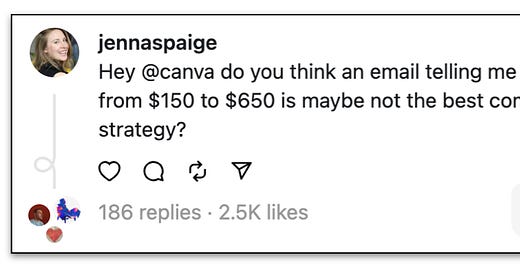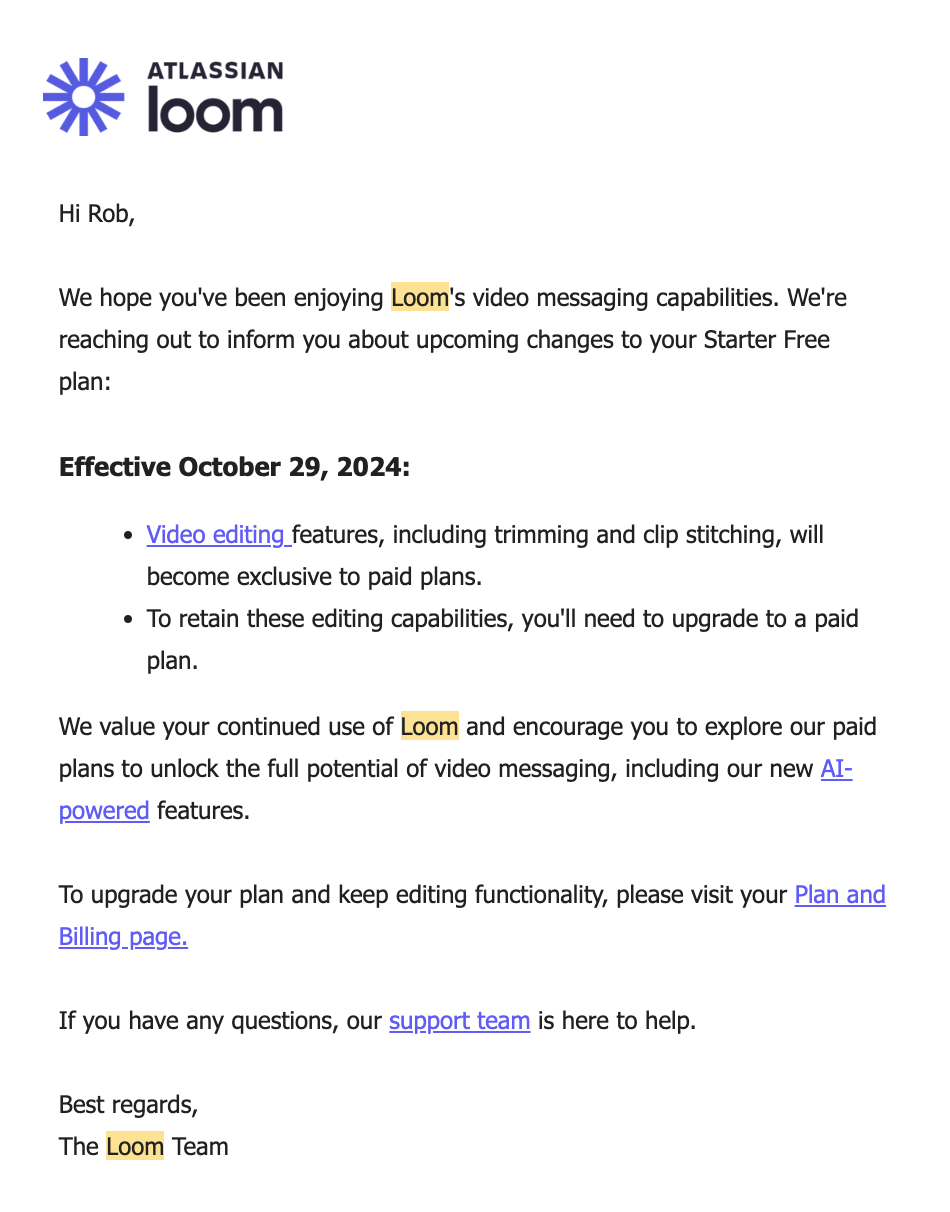3 Simple Steps to Make Pricing Changes Less Terrifying
Plus: Updates from ZipRecruiter, Bynder, and Zeplin.
Welcome back to the 100th issue of Good Better Best!
This newsletter started in 2020 with the goal of helping SaaS operators get better at pricing by learning from examples. Now, with the help of PricingSaaS, I feel better than ever about delivering on that promise. Thank you all for your continued support!
On to this week’s post, where we’re breaking down an
Schematic offers a complete solution for plan management and purchasing on top of Stripe, giving you the tools to easily build and maintain pricing and packaging in your application.
They also host Monetizing SaaS, a podcast where pricing experts, founders, and product leaders share real-world stories and lessons on B2B SaaS monetization.
Recent guests include: the ex-CTO of Salesloft, VP of Product @ LaunchDarkly, Pricing Director @ Docker, Growth Engineering @ Calendly, and more industry leaders.
Check it out to gain actionable insights from some of the best operators in SaaS. Listen, watch, or subscribe here.
🚨 SaaS Product and Pricing News
ZipRecruiter added 5m resumes to its resume databases.
Bynder emphasized its CX user community.
Courier renamed its plans and realigned features.
Zeplin added the ability to get a custom quote for its Basic plan.
RevenueCat consolidated its packaging strategy to two plans.
SignEasy added new features and lowered the price of its Business Plus plan.
3 Simple Steps to Make Pricing Changes Less Terrifying
Price increases aren’t good or bad — they’re part of life.
Look around.
That $7 sandwich is now $12.
Movie tickets are up 33% since 2010.
Netflix and Spotify cost more today than they did last year.
Yet, even the best SaaS companies struggle with raising prices.
Here’s the thing: when done regularly, price increases are one of the easiest ways to drive revenue. But why do SaaS companies find it so hard?
It all comes down to ownership.
Pricing is often an afterthought. No one truly “owns” it, especially at smaller SaaS companies.
Instead of being a core part of the product and marketing process, pricing gets retrofitted—and that’s where the problems start.
No ownership = no process = no action.
This leads to:
Infrequent price updates
Bigger, more disruptive price hikes
Poor communication
Unhappy customers
And that’s what scares SaaS leaders. The backlash can be brutal. Look no further than the reaction to Canva’s latest price increase:
Here’s a controversial take: more frequent price increases are actually better for your customers.
It sounds counterintuitive, but by raising prices regularly, you condition customers to expect it. Here’s how you make it easy:
1. Increase Your Cadence
ProfitWell recommends reviewing pricing every 3 months and making changes every 6 months. That’s the rhythm you should aim for. These don’t have to be big moves either, shifting features to a new package or releasing a new add-on counts.
2. Communicate Habitually
Keep customers in the loop. Regular updates about pricing and packaging soften the blow when changes happen. Loom’s recent update is a perfect example of how simple it can be.
3. Give Early Warnings
When you do raise prices, give customers a heads-up. HubSpot did this by adding a banner on their pricing page to notify customers of upcoming price increases. It allows customers to act early and lock in better deals.
Final Tip: Plan Ahead
Don’t wait until the last minute. Create a pricing committee (Product, Marketing, Sales, and Finance) and assign one person to own it. That way, pricing becomes part of the strategy, not a scramble.
Raise prices regularly, communicate clearly, and plan ahead. You'll find it’s not as scary as it seems — and while its unlikely your customers will thank you, they’ll be less likely to skewer you on the socials.
Thanks for tuning in and see you next week!






